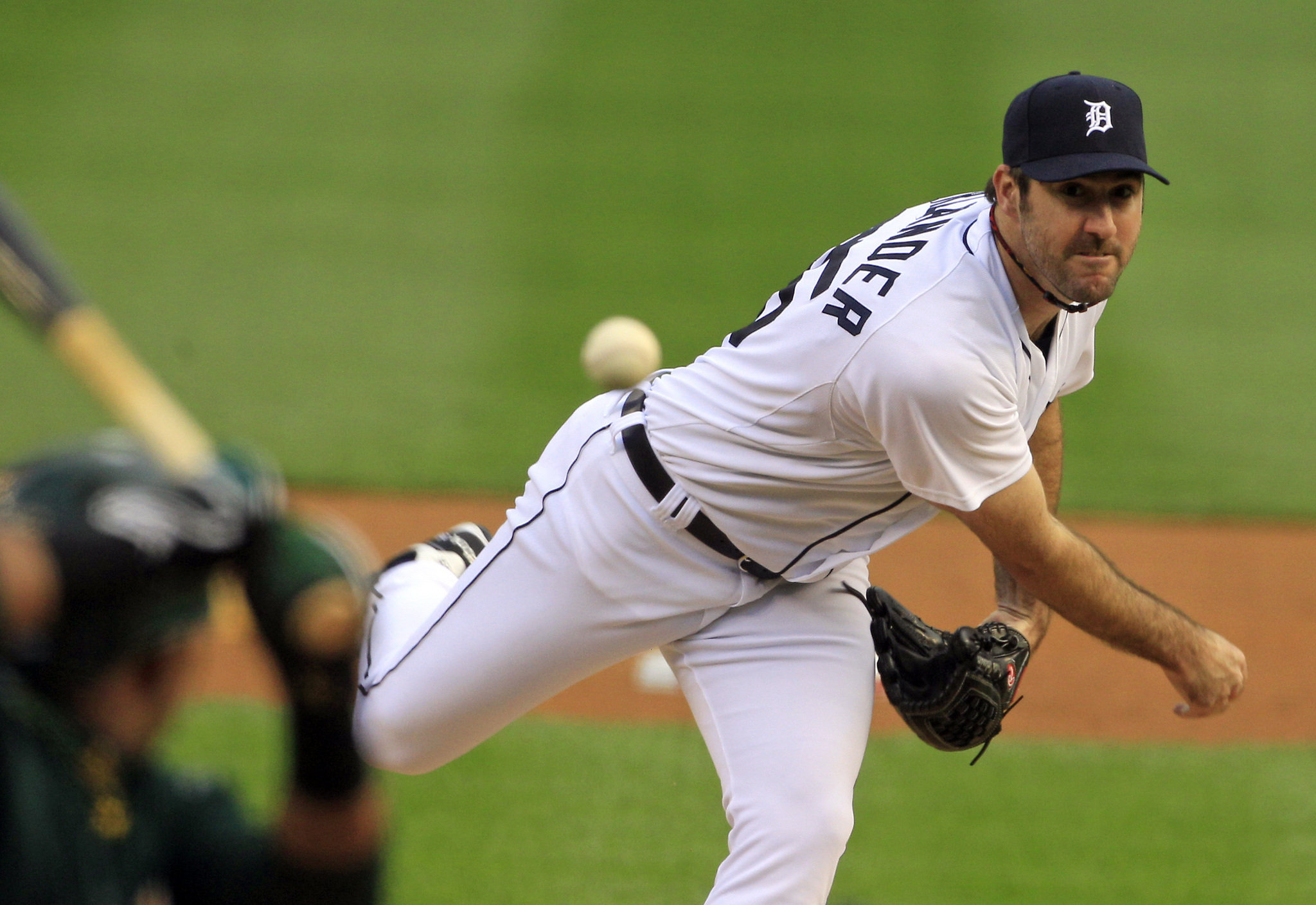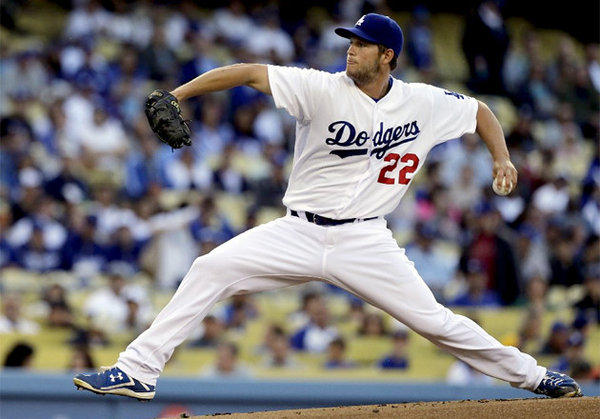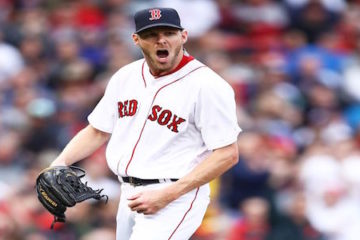Total Run Index: Starting Pitchers 1-10

There is no more controversial fantasy position than on the rubber. At least starting pitchers are more consistent than relief pitchers. This doesn’t remove the fact that fantasy baseball is still dependent on three statistics that most sabermetricians have thrown out of the window. In particular, wins simply don’t matter in real baseball when evaluating a pitcher. In fantasy baseball, it is one of the five major categories. Even ERA and WHIP have become somewhat passe. So, we are left with the divide between evaluating pitchers using the old numbers (which are considerably unreliable) or using the new numbers (which are reliable to themselves, but sometimes don’t translate to the fantasy categories).
The formula for coming up with Total Run Index for pitchers is also complicated because most of the components dealt with pitchers against replacement level and not average. So, the formula becomes more complicated. Many of the run totals are still huge as compared to the position players, but it often isn’t’ that simple. For one, pitchers often fluctuate from season to season, so fantasy players that focus on pitching often get burned. Secondly, we have to consider what I would call “substitution value.” Substitution value is the difference between a fantasy player and the next available player at his position. There are a number of very good starting pitchers, so you don’t have to go nuts with the pitchers early in your draft.
For those new to the game, total run index is a complex statistic that combines statistics from multiple sources into one number. You can rank players based on the number without considering positions, or you can rank players by position and simply look for the gaps when making your strategy. TRI data goes back five seasons whenever possible. I have charted and forecast the data before, but when the metric was vetted by statistical analysts within the game it was criticized because there were some outliers that didn’t make sense. I incorporated their suggestions and came up with a three year and five year average. From there, I chose to use the average that seemed more in line with where the player was going. I bolded that selection for each player below. I will provide an explanation for the choice below.
1. Justin Verlander— Detroit Tigers
2013: 36.2
3 Year: 47.3
5 Year: 48.2
Verlander had an off year last year and it will make some players go away from him. Picking him as the top pitcher last year killed a lot of people (including me), but I am a big believer in the strength in numbers. The three and five year data are incredibly close, which shows that he has been really consistent overall. Most people will pick Clayton Kershaw in this spot and I certainly respect that. Verlander is slightly more durable, so he can give you more counting numbers (wins and strikeouts) than Kershaw.
2. Clayton Kershaw— Los Angeles Dodgers
2013: 46.2
3 Year: 41.3
5 Year: 37.4
No one has been a better pitcher over the last two seasons. What’s scary is that the shelf life for pitchers is less than for position players. Tim Lincecum what the best in baseball for two seasons and look where he is now. That was less than five years ago. Kershaw reminds many of Sandy Koufax and there is no reason not to see it. Koufax was the best in baseball for a four or five year period and that thought alone is enough to make you wonder how long Kershaw can move at this pace.
3. Cliff Lee— Philadelphia Phillies
2013: 35.5
3 Year: 37.0
5 Year: 39.6
If there is a poster child for how unimportant wins are in the grand scheme of things. He was technically a losing pitcher last season, but even with his numbers for 2013 he was a top ten pitcher in spite of the pedestrian won-loss record. Lee has been a WHIP machine because of the astronomically low walks. Of course, the BABIP is unpredictable over time, but with low walks you can count on some good numbers. He isn’t as dominant as Kershaw or Verlander, but he will likely flow way below the radar.
4. Adam Wainright-– St. Louis Cardinals
2013: 39.1
3 Year: 28.1
5 Year: 35.1
Wainright is a perfect example of how you can wait and still get good pitching. He will not go nearly as high as Verlander and Kershaw and you are still talking about a difference of five runs. Furthermore, he is likely to win more games than Lee, so he might even go above him in some drafts. This is where the idea of substitution value comes into play. You can probably get Verlander or Kershaw with a first or second rounder or you can wait until the fourth or fifth round and get someone like Wainright. The choice is yours.
5. Felix Hernandez— Seattle Mariners
2013: 35.3
3 Year: 32.6
5 Year: 34.9
King Felix’s numbers are an indicator of something very important. He is beginning the stage where we are seeing some slippage. His good 2013 season is obscuring that and if you focus on that (and the perfect game) then you will miss the trend. The Mariners gave him big money for big years in spite of the evidence from above. It’s hard to say how many dominant seasons he has left, but the Mariners have put a lot of weight on those shoulders. Hopefully he has another few seasons left in it.
6. Zack Greinke– Los Angeles
2013: 15.7
3 Year: 20.7
5 Year: 32.4
I could be going out on a limb here, but Greinke’s season was cut short by injury and it was one of those fluky injuries that only happens once in a short while. When he came back from the injury he seemed to be his old dominant self. Mind you, the five year average includes his once in a lifetime 2009 season, but I think he is capable of these numbers. It goes to show how dominant the Dodgers may be this next season.
7. Yu Darvish— Texas Rangers
2013: 33.2
3 Year: 30.9
5 Year: N/A
Of course, the three year average is really a two year average. Darvish looked dominant at times, but when he wasn’t facing the Houston Astros he seemed to be a lot more human. Then again, he was better in year two than year one, so there is no reason to believe that he won’t be better in year three than he was last season. In fantasy terms, he is probably the best strikeout pitcher on the board.
8. Max Scherzer– Detroit Tigers
2013: 44.1
3 Year: 29.3
5 Year: 25.1
Don’t get seduced by the wins. It really isn’t anything against Scherzer because he is a very good pitcher. Simply put, winning twenty or more games requires some luck to go along with the skill. Granted, the Tigers bullpen has been improved on the back end and the defense will be a little better behind the pitchers, but he probably will not win twenty games again and may not even win fifteen. The rub of it is he probably will be just as good. That means a ton of strikeouts.
9. David Price— Tampa Bay Rays
2013: 23.8
3 Year: 28.3
5 Year: 23.4
He is a Ray as of this writing, but he may not be there opening day. Rays pitchers outperform their fielding independent pitching numbers on a regular basis, but he could also be traded to a team with a better offense. So, this is a situation to monitor as the offseason moves along. He should outperform 2013 at the very least, so you might be able to take advantage of some people undervaluing him.
10. Cole Hamels— Philadelphia Phillies
2013: 26.1
3 Year: 27.6
5 Year: 27.3
You are looking at probably the most consistent pitcher on the board. Phillies fans probably not happy with that kind of analysis because he seems like the kind of guy that should do more. The huge contract is probably not helping at this point. The problem with huge contracts is that fans suddenly expect more production when you are not going to get it.





1 Comment
I doubt Verlander is taken in the top 10 among starting pitchers in mixed leagues. I think most experience leagues will draft Verlander after Kershaw, Darvish, Lee, Hernandez, Strasburg, Fernandez, Scherzer, Sale, Bumgarner, Sanchez, Greinke, Price, and Hamels are taken. He was mediocre last season, and all you can really hang your hat on is that it was an outlier or perhaps those 2 good September starts against minor league lineups (Miami and Minnesota).